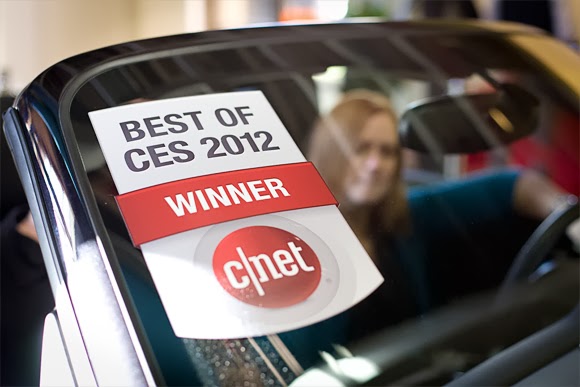 It's one thing to say you can do something. It's another thing to prove it. Which helps explain why we create technology concept cars.
It's one thing to say you can do something. It's another thing to prove it. Which helps explain why we create technology concept cars.You see, we like to tell people that flexibility and customization form the very DNA of the QNX CAR Platform for Infotainment. Which they do. But in the automotive world, people don't just say "tell me"; they say "show me". And so, we used the platform to transform a Bentley Continental GT into a unique concept car, equipped with features never before seen in a vehicle.
Now here's the thing. This is the same QNX CAR Platform found in the QNX reference vehicle, which I discussed last week. But when you compare the infotainment systems in the two vehicles, the differences are dramatic: different features, different branding, different look-and-feel.
The explanation is simple: The reference vehicle shows what the QNX CAR Platform can do out of the box, while the Bentley demonstrates what the platform lets you do once you add your imagination to mix. One platform, many possibilities.
Enough talk; time to look at the car. And let's start with the exterior, because wow:

The awesome (and full HD) center stack
And now let's move to the interior, where the first thing you see is a gorgeous center stack. This immense touchscreen features a gracefully curved surface, full HD graphics, and TI’s optical touch input technology, which allows a physical control knob to be mounted directly on the screen — a feature that’s cool and useful. The center stack supports a variety of applications, including a 3D navigation system from Elektrobit that makes full use of the display:

At 17 inches, the display is big enough to display other functions, such as the car’s media player or virtual mechanic, and still have plenty of room for navigation:

The awesome (and very configurable) digital instrument cluster
The instrument cluster is implemented entirely in software, though you would hardly know it — the virtual gauges are impressively realistic. More impressive still is the cluster’s ability to morph itself on the fly. Put the car in Drive, and the cluster will display a tach, gas gauge, temperature gauge, and turn-by-turn directions — the cluster pulls these directions from the center stack’s navigation system. Put the car in Reverse, and the cluster will display a video feed from the car’s backup camera. You can also have the cluster display the current weather and current sound track:

The awesome (and just plain fun) web app
The web app works with any web browser and allows the driver to view data that the car publishes to the cloud, such as fluid levels, tire pressure, brake wear, and the current track being played by the infotainment system. It even allows the driver to remotely start or stop the engine, open or close windows, and so on:

The awesome (and nicely integrated) smartphone support
The Bentley also showcases how the QNX CAR Platform enables advanced integration with popular smartphones. For instance, the car can communicate with a smartphone to stream music, or to provide notifications of incoming email, news feeds, and other real-time information — all displayed in a manner appropriate to the automotive context. Here's an example:

The awesome everything else
I’ve only scratched the surface of what the car can do. For instance, it also provides:
- Advanced voice rec — Just say “Hello Bentley,” and the car’s voice recognition system immediately comes to life and begins to interact with you — in a British accent, of course.
- Advanced multimedia system — Includes support for Internet radio.
- Video conferencing with realistic telepresence — Separate cameras for the driver and passenger provide independent video streams, while fullband voice technology from QNX offers expanded bandwidth for greater telepresence.
- LTE connectivity — The car features an LTE radio modem, as well as a Wi-Fi hotspot for devices you bring into the car.
Moving pictures
Okay, time for some video. Here's a fun look at the making of the car:
And here's a run-through of the car's many capabilities, filmed by our friends at TI during 2013 CES:
















